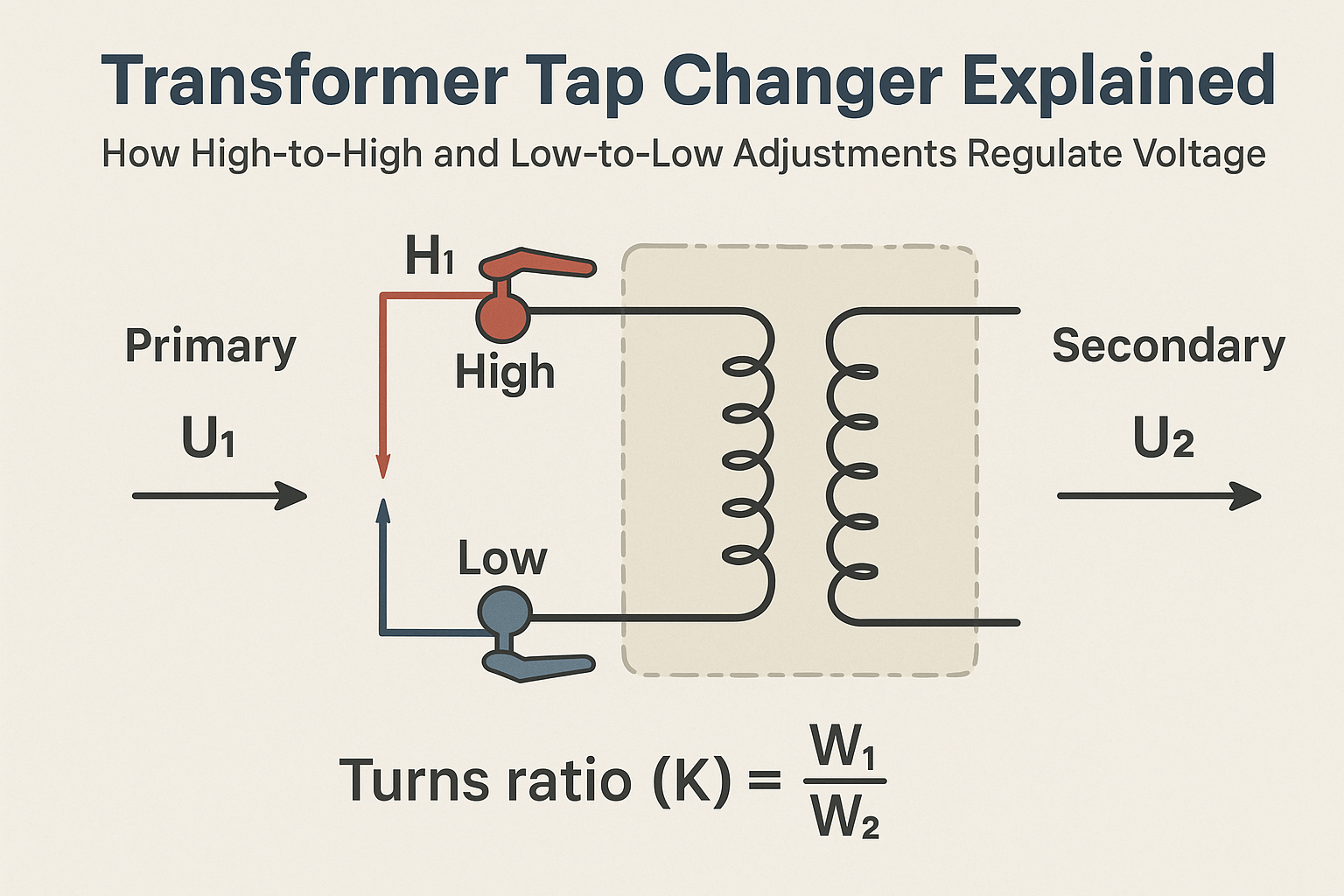Transformer tap changers play a critical role in maintaining voltage stability within power systems. By adjusting the tap positions, transformers can regulate their output voltage to match system requirements, ensuring safe and efficient operation of electrical equipment.
1. Principle of Tap Changer Operation
A tap changer functions by changing the number of turns in a transformer winding, thereby altering the transformer’s turns ratio (K).
The turns ratio is defined as:

where W₁ and W₂ are the primary and secondary winding turns, and U₁ and U₂ are the corresponding voltages.
For example, consider a step-down transformer rated at 6000V ±5% / 400V.
Its nominal turns ratio is:

When the tap position is increased (e.g., +5%), the number of effective turns in the primary winding increases, which raises K and reduces the secondary voltage.
Conversely, lowering the tap position decreases K, thereby increasing the secondary voltage.
2. Why High-to-High and Low-to-Low Adjustment?
Most no-load (de-energized) tap changers are installed on the high-voltage side because:
-
The high-voltage winding is typically wound around the low-voltage winding, making tap connections more accessible.
-
The high-voltage current is lower, allowing for smaller conductor cross-sections and reducing contact wear and heating issues.
Typical three-phase transformers provide tap ranges of ±5% of the rated voltage.
Adjusting the tap changes the number of turns on the primary winding, thus modifying the turns ratio and regulating the output voltage.
3. How to Adjust Transformer Tap Positions
Tap changers are adjusted only when the transformer is de-energized, which is why they are called No-Load Tap Changers (NLTCs).
For a transformer with three tap positions:
| Tap Position | Primary Voltage | Secondary Voltage |
|---|---|---|
| Tap 1 (High) | 105% | Lowest |
| Tap 2 (Normal) | 100% | Nominal |
| Tap 3 (Low) | 95% | Highest |
When the secondary voltage is too high, the tap should be moved toward the high position.
When the secondary voltage is too low, move the tap toward the low position.
This principle — “high-to-high, low-to-low” — ensures consistent voltage regulation in response to system conditions.
4. Importance of Tap Adjustment in Power Systems
In real-world operation, system voltages fluctuate due to changes in load and network configuration.
Overvoltage or undervoltage conditions can shorten equipment lifespan or cause malfunction.
By adjusting transformer taps, operators can compensate for these variations, maintaining a stable and reliable supply voltage.
Proper tap management helps extend transformer service life and protect connected electrical assets.


